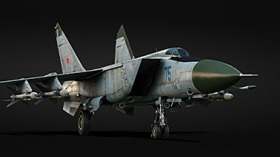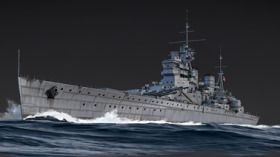
- For PC
- For MAC
- For Linux
- OS: Windows 10 (64 bit)
- Processor: Dual-Core 2.2 GHz
- Memory: 4GB
- Video Card: DirectX 11 level video card: AMD Radeon 77XX / NVIDIA GeForce GTX 660. The minimum supported resolution for the game is 720p.
- Network: Broadband Internet connection
- Hard Drive: 22.1 GB (Minimal client)
- OS: Windows 10/11 (64 bit)
- Processor: Intel Core i5 or Ryzen 5 3600 and better
- Memory: 16 GB and more
- Video Card: DirectX 11 level video card or higher and drivers: Nvidia GeForce 1060 and higher, Radeon RX 570 and higher
- Network: Broadband Internet connection
- Hard Drive: 62.2 GB (Full client)
- OS: Mac OS Big Sur 11.0 or newer
- Processor: Core i5, minimum 2.2GHz (Intel Xeon is not supported)
- Memory: 6 GB
- Video Card: Intel Iris Pro 5200 (Mac), or analog from AMD/Nvidia for Mac. Minimum supported resolution for the game is 720p with Metal support.
- Network: Broadband Internet connection
- Hard Drive: 22.1 GB (Minimal client)
- OS: Mac OS Big Sur 11.0 or newer
- Processor: Core i7 (Intel Xeon is not supported)
- Memory: 8 GB
- Video Card: Radeon Vega II or higher with Metal support.
- Network: Broadband Internet connection
- Hard Drive: 62.2 GB (Full client)
- OS: Most modern 64bit Linux distributions
- Processor: Dual-Core 2.4 GHz
- Memory: 4 GB
- Video Card: NVIDIA 660 with latest proprietary drivers (not older than 6 months) / similar AMD with latest proprietary drivers (not older than 6 months; the minimum supported resolution for the game is 720p) with Vulkan support.
- Network: Broadband Internet connection
- Hard Drive: 22.1 GB (Minimal client)
- OS: Ubuntu 20.04 64bit
- Processor: Intel Core i7
- Memory: 16 GB
- Video Card: NVIDIA 1060 with latest proprietary drivers (not older than 6 months) / similar AMD (Radeon RX 570) with latest proprietary drivers (not older than 6 months) with Vulkan support.
- Network: Broadband Internet connection
- Hard Drive: 62.2 GB (Full client)

We are continuing to develop and improve our approach to shell configuration. When working through the various phases of configuring the shells, we have based those on sources from their countries of origin as well as unified sources which provide data for multiple shells represented in the game, we decided to configure shells on the basis of formulas, which is, in our opinion, the best method for players to easily understand.
This method will make it possible to standardise the armour penetration system and avoid situations where documents from various countries provide different data on armour penetration for the same shell. It will allow us to configure shells much more effectively, yet no less realistically, even when certain data is unavailable.
We are constantly improving the armour penetration system in War Thunder, and right now, we can highlight two phases that have been expressed in its development, each of which is fair and correct in its own way.
The first phase involved the configuration of penetration based on data from documents and firing data for each weapon and type of ammunition. In this case, we prioritised sources from the countries of origin.
The second phase involved the switch to a “unified” system, the basis for which was numerical data from one source per country. This version allowed us, to a certain extent, to collate data from various sources and countries.
However, these phases were not able to unify the armour penetration system and make it comprehensible to players while preserving its documentary and technical basis. These configuration methods also facilitate a peculiar kind of “tug of war” in which various sources appear one after another, frequently with contradictory data. After performing a lengthy and detailed analysis, we decided to improve the current system and make it easier to understand. This is an important step in the never-ending process of improving ballistics and damage models.
You can find out more about shells and armour penetration in the War Thunder Wiki.
The DeMarr and Lanz-Odermatt Formulas
There have been some recent changes that you may have already noticed in the game. These include refinements to the ballistics parameters for high-calibre armour-piercing rounds. In order to do this, we used firing tables and other documents that allowed us to more accurately set falling speeds at range for these shells. For types of ammo for which there was, for whatever reason, no precise data, we used the parameters of shells from the tables with a similar design and characteristics. Having obtained more exact data on speed, we can reevaluate the penetration system using a formula-based calculation. We decided to use the DeMarr formula because it is the most accessible and comprehensible formula for high-calibre armour-piercing (AP/APC/APBC/APCBC) and sub-calibre (APCR/HVAP) shells. When it comes to sub-calibre fin-stabilised shells, we decided to use the Lanz-Odermatt formula. We are still working on APDS shells. Information about them will appear a bit later than the aforementioned ammo types.
One of the new features in the system for calculating armour penetration is that it will now take it into account if a shell contains a chamber full of explosives. The percentage of explosives contained within the shell will be factored into armour penetration indicators – the higher the ratio of explosives to the weight of the shell, the lower the armour penetration. This allows for the more accurate implementation of indicators for semi-armour-piercing and armour-piercing shells with a large quantity of explosives and a relatively slender body.
The implementation of this system for calculating armour penetration will occur in phases: we are planning to start by switching the more commonly-used ammo types. such as high-calibre armour-piercing and armour-piercing fin-stabilised shells, to this system. Then we’ll move on to sub-calibre shells (APCR/HVAP) and sub-calibre shells with a discarding sabot (APDS). There are certain challenges involved in calculating the latter, and it is possible that, for a certain portion of shells, the old armour penetration system will be preserved. These shells represent an insignificant portion of the shells available in game. One example would be the L15A3/A5, M728.
So how will this improve the game?

It will allow us to optimise the penetration system and unify it for all high-calibre (APCR/HVAP) shells. At the same time, it will allow us to avoid situations in which data from various sources and countries is contradictory, since these sources were managed by various systems and penetration methodologies. We believe that the new system will be more transparent and easier for players to understand without sacrificing realism (as an example, in the USSR’s firing tables the data on penetration follows the same DeMarr formula, as do the calculations in AaG). Yet another advantage will be the ability to immediately get penetration data for any high-calibre or sub-calibre (APCR/HVAP) armour-piercing shell for which there is information about its muzzle velocity, falling speed, and mass. For AP/APC/APBC/APCBC shells we have also recalculated the effect of incline – the effect whereby the thickness of the armour being penetrated drops as the incline increases (the slope effect) when performing formula-based calculations in order to achieve uniformity and eliminate certain inaccuracies in their current values. As you can see from the examples below, compared to the current values for an angle of incidence of 30 degrees, penetration ends up increasing, and for an angle of 60 degrees, on the contrary, it drops. According to our evaluations, the role of proper tank positioning, i.e. placing the tank correctly in relation to the weapon being fired, will increase. Using this chart you can familiarise yourself with the formula for calculating the slope effect for AP/APBC/APCBC shells and the resulting slope effect values.
APCR/HVAP and APDS shells will get updated slope effects that will make it possible to more accurately factor in the technical characteristics of a shell’s construction that influence the penetration process. For APCR/HVAP shells the indicators for speed reduction will be ascertained based on the example of how this was done for APHE and APDS shells. The new system is so simple and productive that, if you know a shell’s individual attributes, you can calculate its penetration using the DeMarr formula on your own.
Foreseeing questions about “historical accuracy” and correspondence with actual firing data, we should mention that the data used to calculate armour penetration figures are based on existing documents and is nothing out of the ordinary. Historical and technical accuracy will remain one of the key parts of the game, but the game environment cannot match reality exactly, so the values used for our calculations allow for a certain degree of conventionality.
The War Thunder Team




Comments (129)
im all for a better system for shells :D
Will document sources contraddicting the results of the formula be discarded even if there is no contraddiction with other documents, or could there be exceptions in the system? I know you mentioned APDS, was wondering if other shells might also be excluded in some cases.
Be nice to see the shockwave from the higher velocity rounds implemented. For example, your APFSDS round may go right through the crew compartment and miss all the members, in WT that would be a completely ineffectual hit. IRL the shockwave throughout that compartment would disable, if not outright kill, the crew. This is the reason folks like the British use AP type rounds, which are garbage in WT. They are actually quite effective IRL in comparison.
Thank you!!! There is a reason we and the Brits use sabot so much. I dont think WT takes into account the DU that they are made out of, either.
ElMiguelito, Well DU is different, and has incendiary effects once it penetrates. It will basically be APFSDS+HE once implemented (if ever). I'm talking about good old solid steel or tungsten penetrators that can fly right beside the gunner and he is unaffected, which simply isn't right.
It'd be nice to actually recommend my friend who hasn't played much war thunder to play british, if APDS stops being garbage
I love this idea. There are huge dollops of fantasy in this game, as it is a necessary evil when creating something like this. By giving all bullets the same calculations you even the playing field and apply the same level of fantasy to everyone. It will feel realistic, and be fairly distributed. Which is great.
APCR should pen at great angle not only reserved for flat, minor angles. APDS need buff to dmg.
Meanwhile the game itself and it's actual GAMEPLAY is boring AF! but yeah good a few parameters here and there got changed, meanwhile the game is just a plain dead Arcade Deathmach with FPS peek-aboo style Gameplay, rush caps, camp spawns, CAS spamm wnathnot. but yeah rly good you managed to "USSR’s firing tables the data on penetration follows the same DeMarr formula," All i needed to know! Russian Shit scientists GJ!
please tell me that shells will finally have their accurate and historical values, such as the American 76mm armor piercing rounds and many many more. Also, I hope this fixes the issue with the Russian 85mm gun overperforming.
I'm fine with the general concept of improving the physics of the game. Just remember that the Lanz-Odermatt equations are only accurate to Monobloc Long-rod Penetrators. Russian (and other) multi-part penetrators have different characteristics which, thus far, have actually been generally well-represented, though perhaps not perfect, in-game, with the russian rounds being more effective against flat armor and the monoblocs being more effective against angled armor.
Thank you very much! This, at least on paper, seems like a good way forward.
Submit a complaint